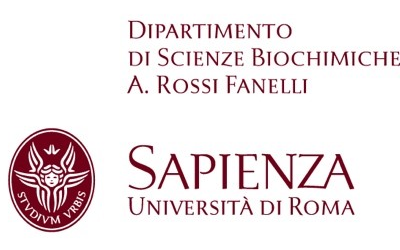12) DSB-UROM – Sapienza University of Rome
Location: Rome, Italy
Web-site(s):
MOSBRI reference site for the following techniques:
Rapid Kinetics: Stopped and continuous flow, T-Jump, SEAHORSE: Live cell metabolic biosensing


Partner description
Located in the Department of Biochemical Sciences of Sapienza University (largest University in Europe, over 100.000 students), DSB-UROM offers access to 2 installations (ARP and HYP-ACB) to study in normoxia/hypoxia:
- rapid kinetic processes (micro- to milliseconds) on purified macromolecules in vitro by different spectroscopies (absorbance, fluorescence) (ARP);
- real-time energy metabolism in live cells by fluorescence biosensing (HYP-ACB).
Instruments / methodologies offered through TNA
- ARP: Stopped-flow instruments (msec-time frame ≥ 10 ms) to study folding/unfolding processes, enzyme reaction mechanisms, rapid binding or dissociation processes (absorbance and fluorescence). For faster measurements, a Hi-Tech PTJ-64 capacitor-discharge T-jump apparatus ( ≥ 20 μs) for fluorescence and absorbance experiments is available, as well as an in-house built continuous flow (original prototype) based on a capillary mixing methodology (dead-time 50 μs).
The ARP laboratory includes in detail the following equipment:
- Applied Photophysics single-mixing -SX-18
- Applied Photophysics Pi-star 180,
- Applied Photophysics sequential-mixing DX-17MV
- Tgk Scientific Hi-Tech PTJ-64 capacitor-discharge T-jump apparatus
- in-house built continuous flow (original prototype) based on a capillary mixing methodology (dead-time 50 μs) with a fluorescence CCD camera
Spectrofotometers/fluorimeters for general analysis of samples before kinetic measurements are also available.
- HYP-ACB: The installation uses advanced fluorescent technology for real-time biosensing of energy metabolism (Seahorse Bioscience-Agilent XFE96) in prokaryotic and eukaryotic cells. A hypoxic chamber Don Whitley i2 for measurements up to 3% O2 is available, a feature shared by few other installations in Europe.
The Hyp-ACB laboratory includes the following equipment:
- Seahorse XFe96 Agilent
- Hypoxic cabin Don Whitley mod. i2 Workstation
- Sterile hood Thermo Scientific MSC Advantage E 1.2
- Incubator Thermo Scientific FORMA Steri-cycle 250i
- Microscope EVOS XL CORE Invitrogen
- Real-Time PCR Applied Biosystems QuantStudio 3
The lab is fully equipped for molecular/cell biology support during experiments.
Access modality: A physical access visit is on average 3 days (ARP) or 5 days (HYP-ACB) long. Each visit comes with 2 or 7 days of remote access for finalizing the experiments, respectively. Remote access can be planned if necessary
Sample requirements and further technical details
Full details of the sample requirements for each of the techniques offered at this TNA site can be found here. Further, more specific details, of some of the techniques offered are also included.
